
Office workspace Design:
Creating Inspiring Work-spaces for Productivity and Comfort In today’s fast-paced business world, office interior design plays a crucial role in creating inspiring work-spaces that foster productivity, collaboration, and employee well-being. A thoughtfully designed office not only reflects a company’s brand identity but also enhances the overall work experience. From ergonomic furniture to innovative layout designs, this article delves into the essential elements of office interior design that transform ordinary spaces into thriving hubs of creativity and efficiency.
Table of Contents
- Introduction
- Importance of Office workspace Design
- Strategic Space Planning: Optimizing Layouts
- Ergonomics: Prioritizing Employee Comfort
- Lighting and Color Psychology: Setting the Mood
- Incorporating Biophilic Design for Well-being
- Technology Integration: Smart Offices for the Future
- Branding and Aesthetics: Creating a Distinctive Identity
- Collaboration Zones: Fostering Teamwork and Innovation
- Privacy Solutions in Open Work Environments
- Sustainability and Green Initiatives
- Art and Décor: Adding a Personal Touch
- Budget-Friendly Design Ideas
- Measuring the Impact of Office Design
- Future Trends in Office workspace
- Conclusion
Introduction
The modern office has evolved beyond being a mere workspace; it is now a strategic tool that influences employee performance and engagement. Office interior design has the power to create an environment that enhances creativity, encourages collaboration, and supports the physical and mental well-being of employees.

Importance of Office workspace Design

Effective office interior design goes beyond aesthetics. It has a direct impact on employee morale, job satisfaction, and even talent attraction and retention. A well-designed workspace reflects the company’s culture and values, making employees feel a sense of belonging and pride.
Strategic Space Planning: Optimizing Layout
Thoughtful space planning serves as the fundamental pillar of creating a highly efficient and functional office workspace. It’s a strategic approach that harmonizes various elements to optimize the environment for both productivity and well-being. Open layouts, a hallmark of modern office design, foster a sense of camaraderie and collaboration among team members. The absence of physical barriers promotes spontaneous interactions, idea exchange, and a vibrant atmosphere that stimulates creativity.
Careful space planning is at the core of efficient office workspace design. Open layouts encourage interaction, while designated quiet zones enhance focus. A well-balanced layout maximizes space utilization and ensures seamless workflow.
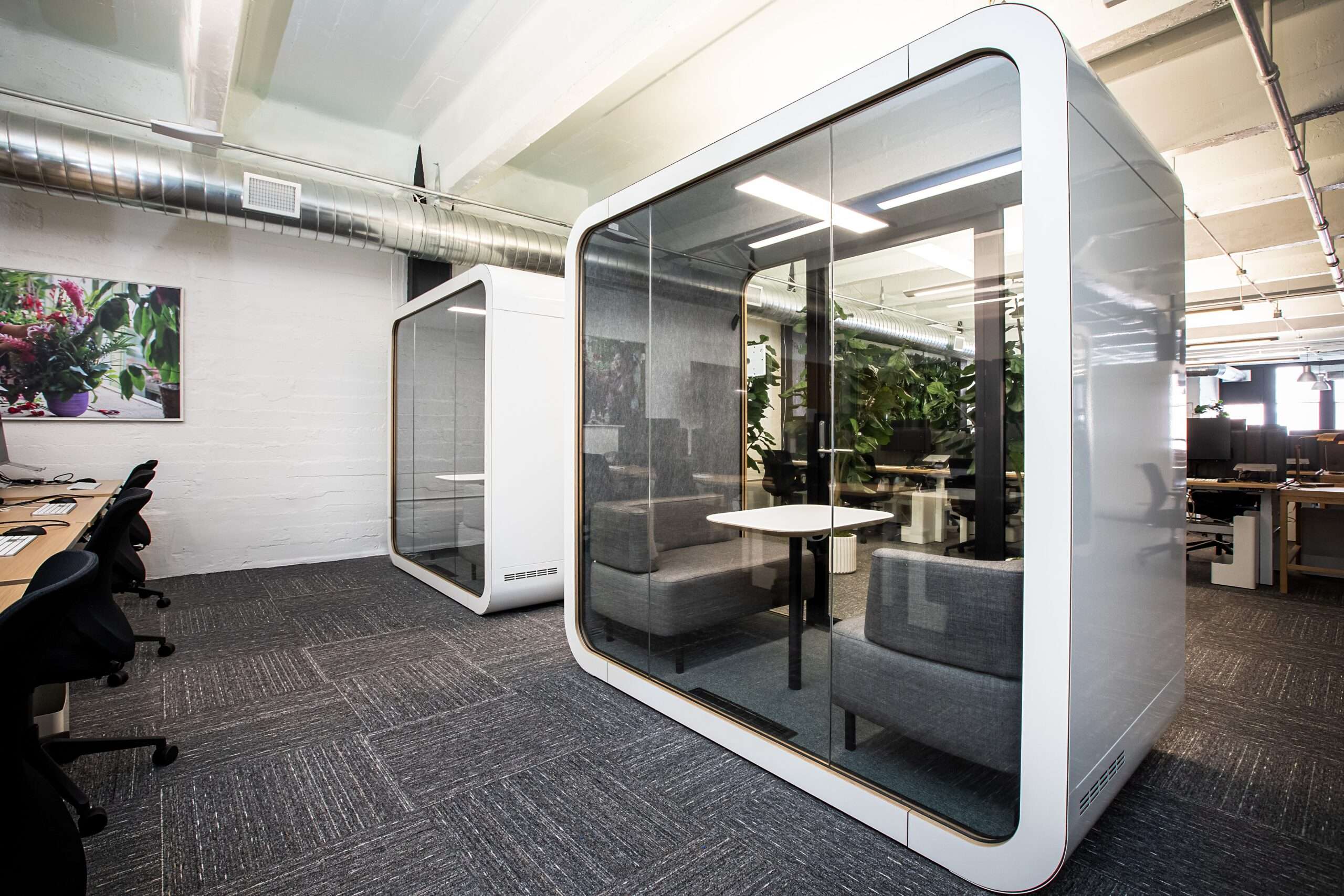
Ergonomics: Prioritizing Employee Comfort
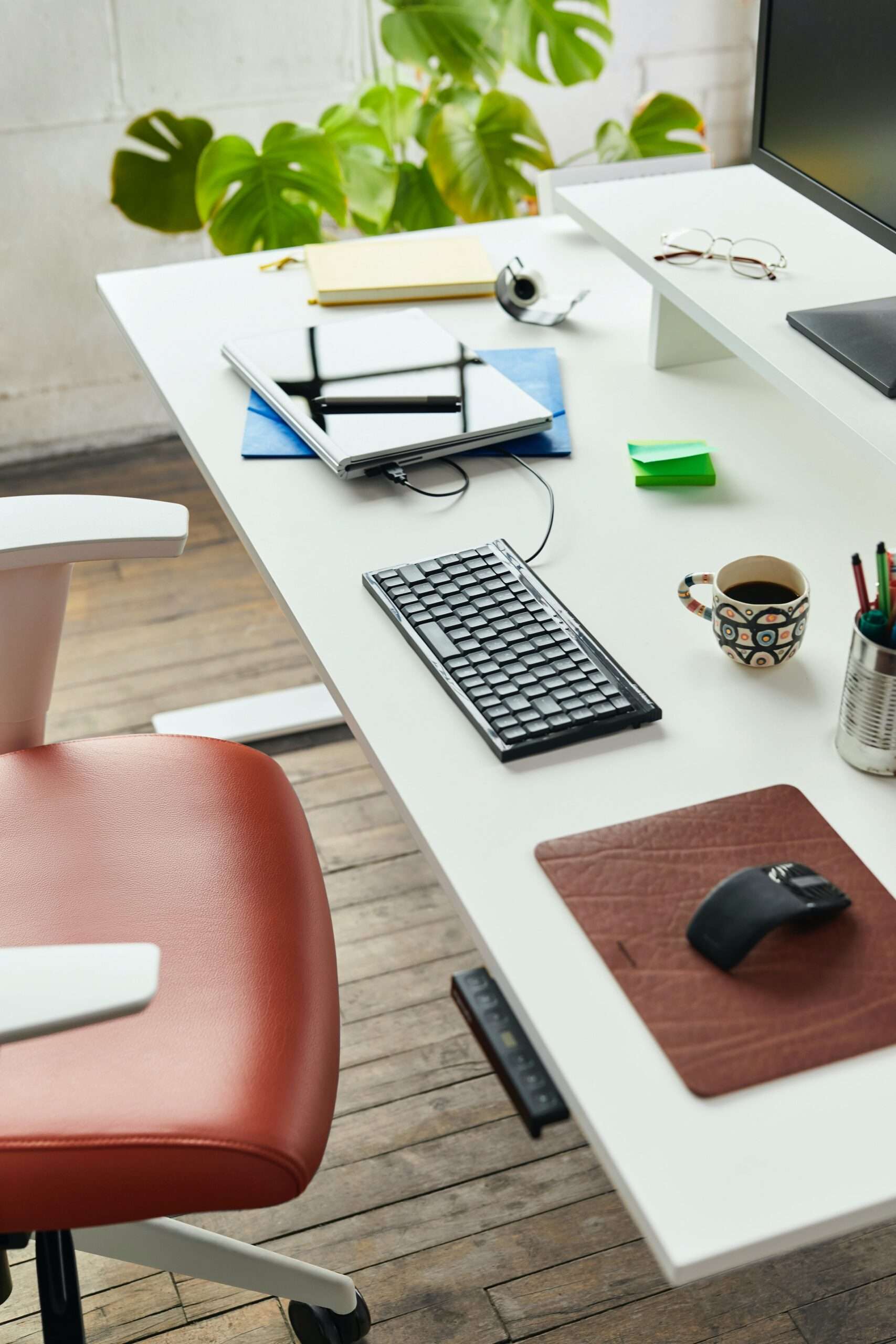
Focusing on obtaining ergonomic furniture and equipment is of utmost importance when it comes to safeguarding the well-being and comfort of your employees. Ergonomics is a specialized field that concerns itself with designing and arranging items in a way that optimizes efficiency, minimizes discomfort, and reduces the risk of physical strain or injury. By prioritizing the acquisition of ergonomic furnishings and gear, you are taking proactive steps to create a workspace that not only promotes productivity but also contributes to the overall health and satisfaction of your staff.
Investing in ergonomic furniture such as chairs, desks, and workstations tailored to support proper body posture can have a positive impact on employees’ musculoskeletal health.
By placing emphasis on acquiring ergonomic furnishings and gear, you are not only demonstrating your commitment to the physical health of your workforce but also recognizing the potential impact on their mental well-being.
In conclusion, the strategic prioritization of ergonomic furnishings and equipment procurement serves as a proactive measure to cultivate a healthier, more comfortable, and productive workspace
Lighting and Color Psychology: Setting the Mood
The influence of light and thoughtfully selected color palettes on mood and productivity cannot be understated. Introducing features like expansive windows and calming hues establishes a delightful ambiance, invigorating employees and cultivating an exceptional workspace.
The infusion of task lights fosters positivity and reduces feelings of confinement, while soothing colors contribute to a serene environment that enhances focus and creativity. By leveraging these design elements, a workplace is not only aesthetically pleasing but also becomes a space that inspires and motivates, ultimately nurturing a conducive setting where employees can flourish and excel in their tasks
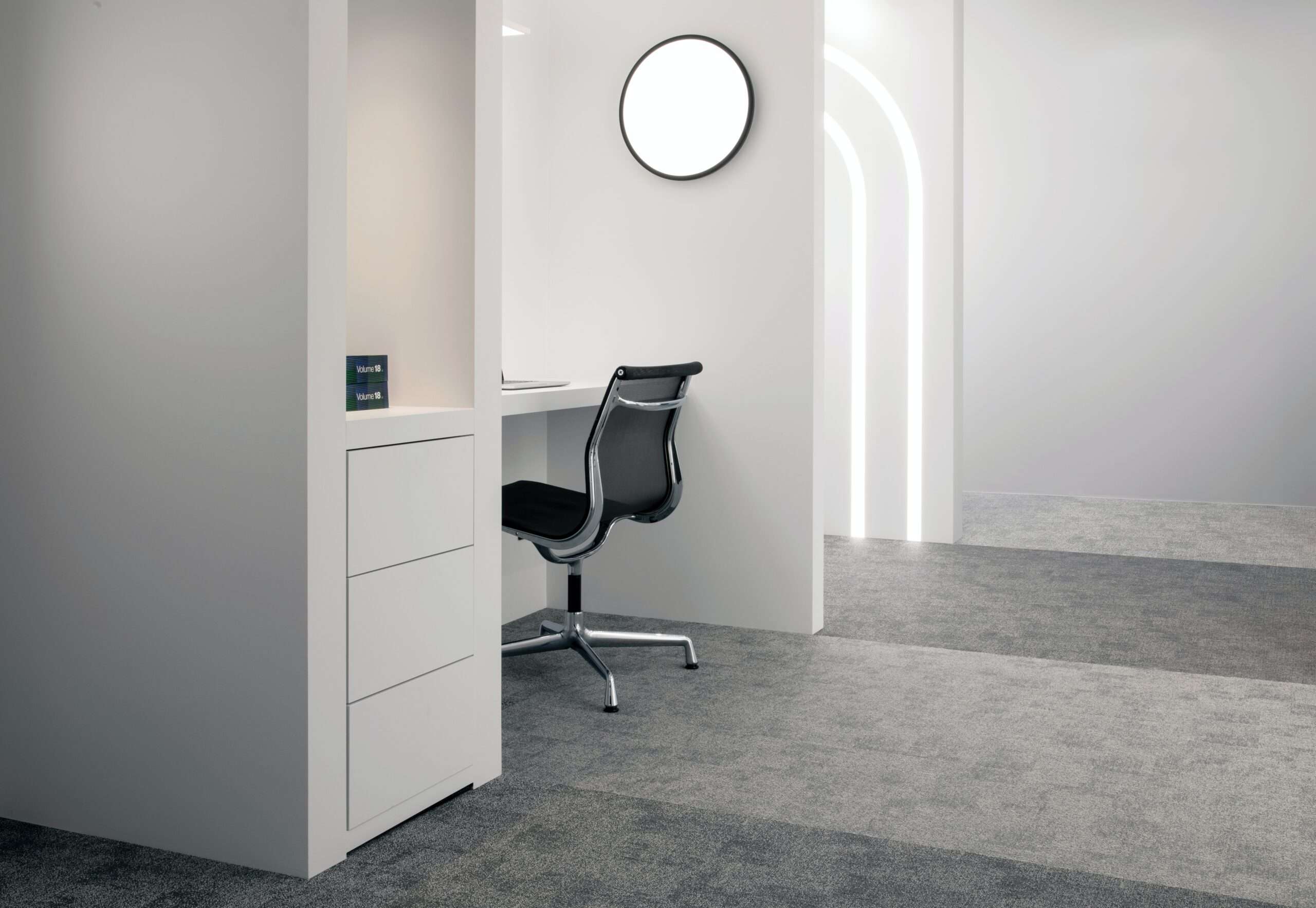
Incorporating Biophilic Design for Well-being
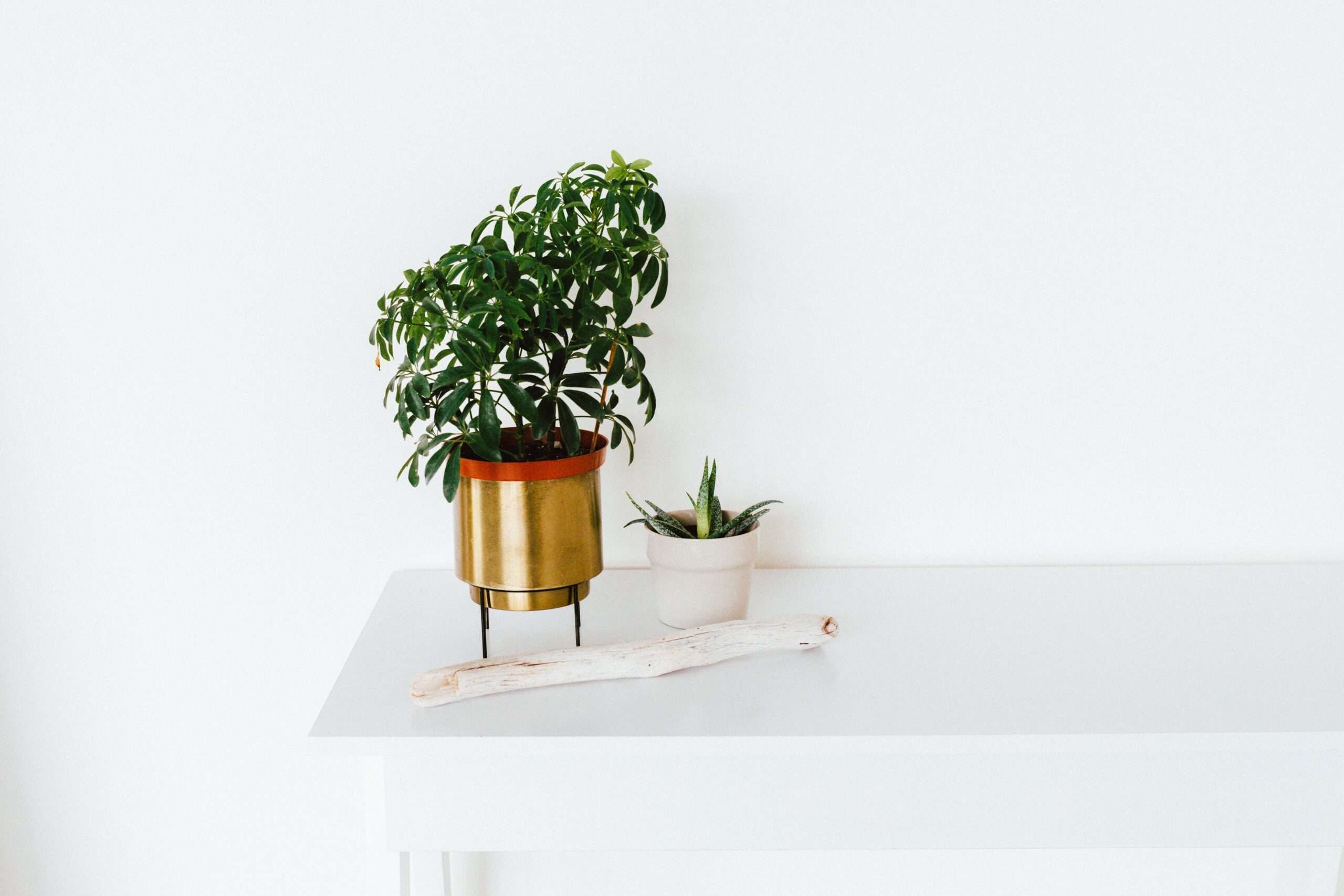
Embracing biophilic design brings a myriad of benefits to the workplace. By seamlessly integrating nature indoors through the inclusion of indoor plants, organic materials, and even gentle water features, stress levels are diminished and creativity is amplified. This design philosophy harnesses the innate human affinity for nature, fostering a sense of tranquility and connection to the environment. The presence of lush greenery and earthy textures not only rejuvenates the space aesthetically but also promotes well-being, making the workspace a sanctuary of inspiration. Ultimately, biophilic elements imbue the surroundings with vitality, contributing to a more harmonious and invigorating atmosphere that enriches employees’ overall experience.
Technology Integration: Smart Offices for the Future
Seamlessly incorporating technology into the workplace yields heightened efficiency and convenience. The integration of smart lighting and climate control systems, coupled with advanced collaborative tools, gives rise to a forward-looking workspace that effortlessly tailors itself to employee requirements. This convergence of technological innovations not only streamlines daily operations but also cultivates an environment where tasks are expedited and communication is optimized. Such a tech-savvy approach engenders a workplace that aligns with modern demands, enhancing both productivity and the overall decreases the overheads of the office

Branding and Aesthetics: Creating a Distinctive Identity
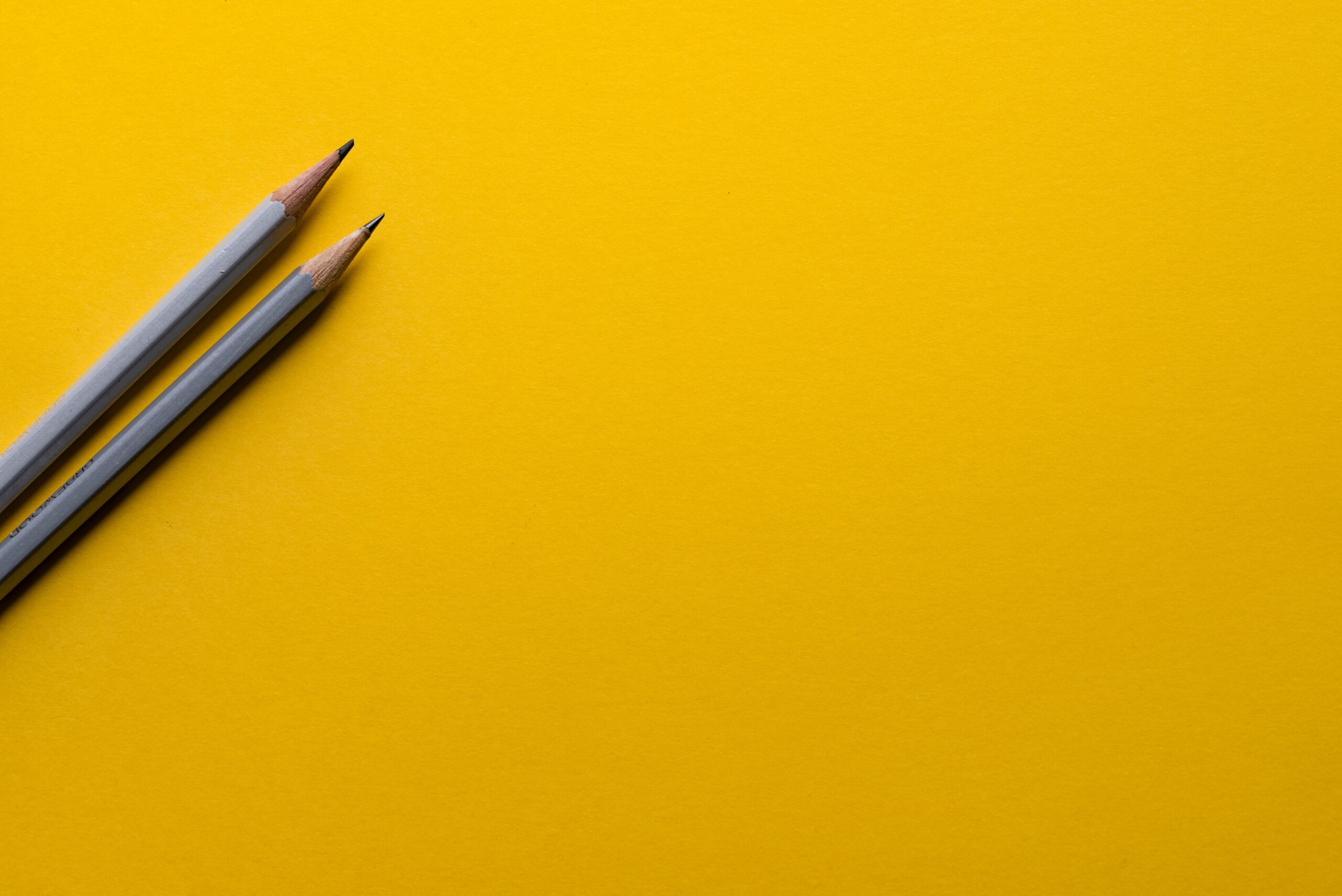
The configuration of the office workspace should reflect and embody the core essence and values of the company’s brand identity. Every aspect of the design, from layout to aesthetics, should resonate with the brand’s ethos, creating a cohesive and authentic environment. This alignment fosters a sense of unity between the physical space and the company’s mission, ultimately reinforcing the brand’s narrative. Such a deliberate and harmonious approach not only reinforces the company’s image to employees and visitors but also cultivates a strong organizational culture that is deeply rooted in the brand’s unique identity and aspirations
Collaboration Zones: Fostering Teamwork and Innovation
Designated collaboration zones serve as catalysts for the exchange of ideas and collaborative efforts. Workspaces featuring comfortable seating, interactive writable walls, and multimedia capabilities provide an inviting arena that fosters innovation and nurtures creative thinking. These well-equipped areas inspire dynamic discussions, enabling teams to visualize concepts, brainstorm freely, and explore novel solutions. By offering an environment designed to support effective teamwork and unfettered expression, companies cultivate an atmosphere where ingenuity flourishes, leading to the emergence of groundbreaking concepts and the collective realization of innovative projects
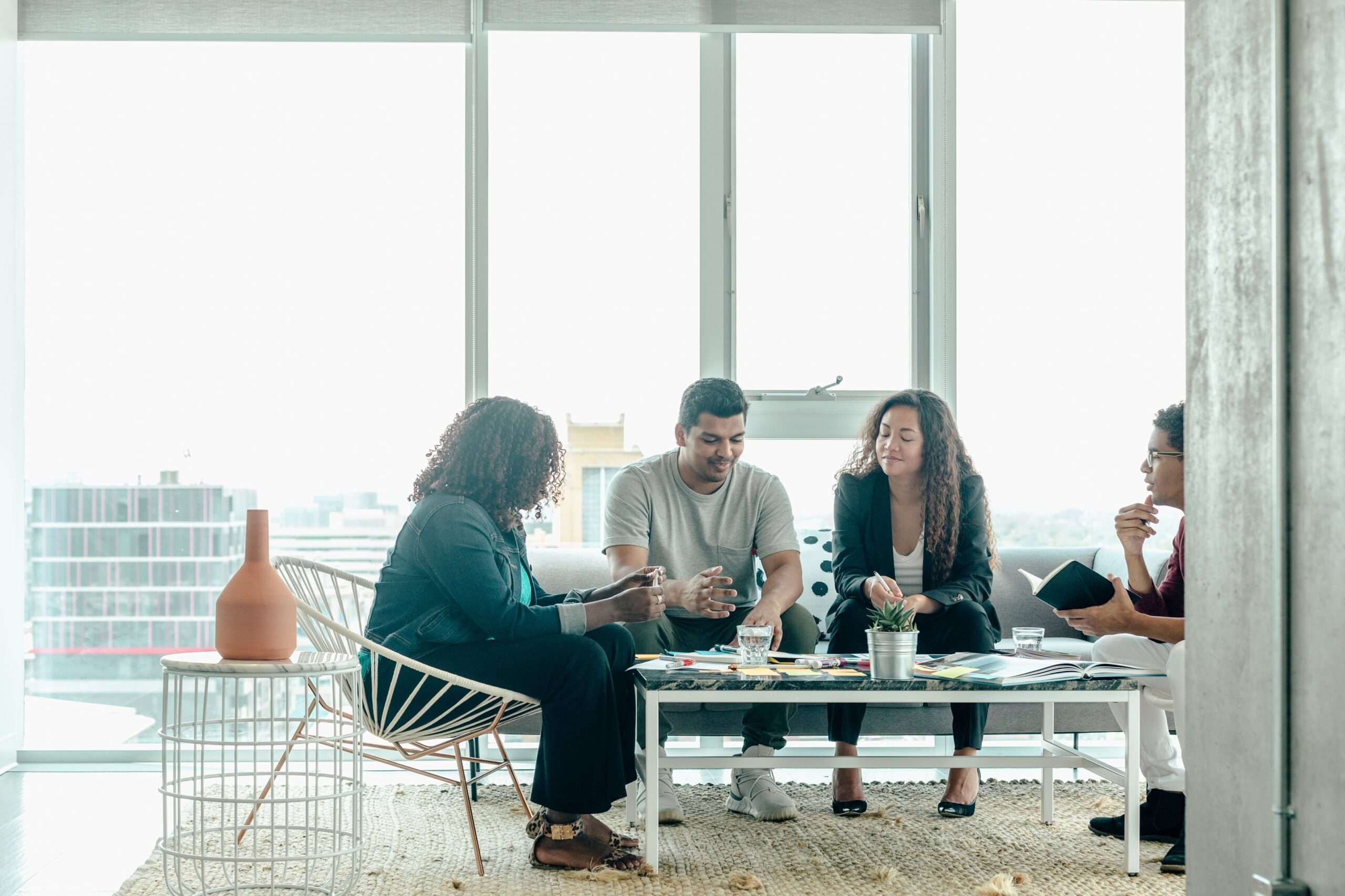
Privacy Solutions in Open Work Environments

In the realm of contemporary office architecture, striking a delicate equilibrium between promoting an open, collaborative environment and ensuring individual privacy has emerged as a pivotal consideration. This equilibrium is essential to cultivate a work atmosphere that nurtures creativity, teamwork, and productivity, while also safeguarding sensitive information and personal space.
The introduction of innovative design elements such as phone booths, private pods, and sound-absorbing panels serves as a testament to this design philosophy. These features ingeniously cater to the multifaceted requirements of modern workspaces. Phone booths, secluded havens within the bustling expanse, afford employees the chance to engage in focused tasks or private conversations, free from distractions. Simultaneously, private pods offer isolated retreats for intense concentration or confidential discussions, all while maintaining a sense of connectedness to the broader office ecosystem.
Moreover, sound-absorbing panels contribute to an ambiance that curtails the propagation of intrusive noise, creating pockets of tranquility amidst the dynamic surroundings
In essence, the harmonious fusion of openness and privacy in contemporary office design acknowledges the diverse array of tasks undertaken in the workplace.
Sustainability and Green Initiatives
Embracing green design principles extends benefits beyond the environment, positively impacting employee welfare. By adopting energy-efficient lighting, utilizing recycled materials, and making sustainable furniture selections, a dedication to eco-conscious practices is showcased. This not only lessens the ecological footprint but also nurtures a workplace that supports employee health and contentment. Natural lighting and non-toxic materials improve indoor air quality, boosting cognitive function and overall wellness. The integration of environmentally responsible elements underscores a progressive ethos, fostering a symbiotic relationship between a healthier planet and the enhanced well-being of the workforce, ultimately cultivating a more productive and socially responsible work milieu.
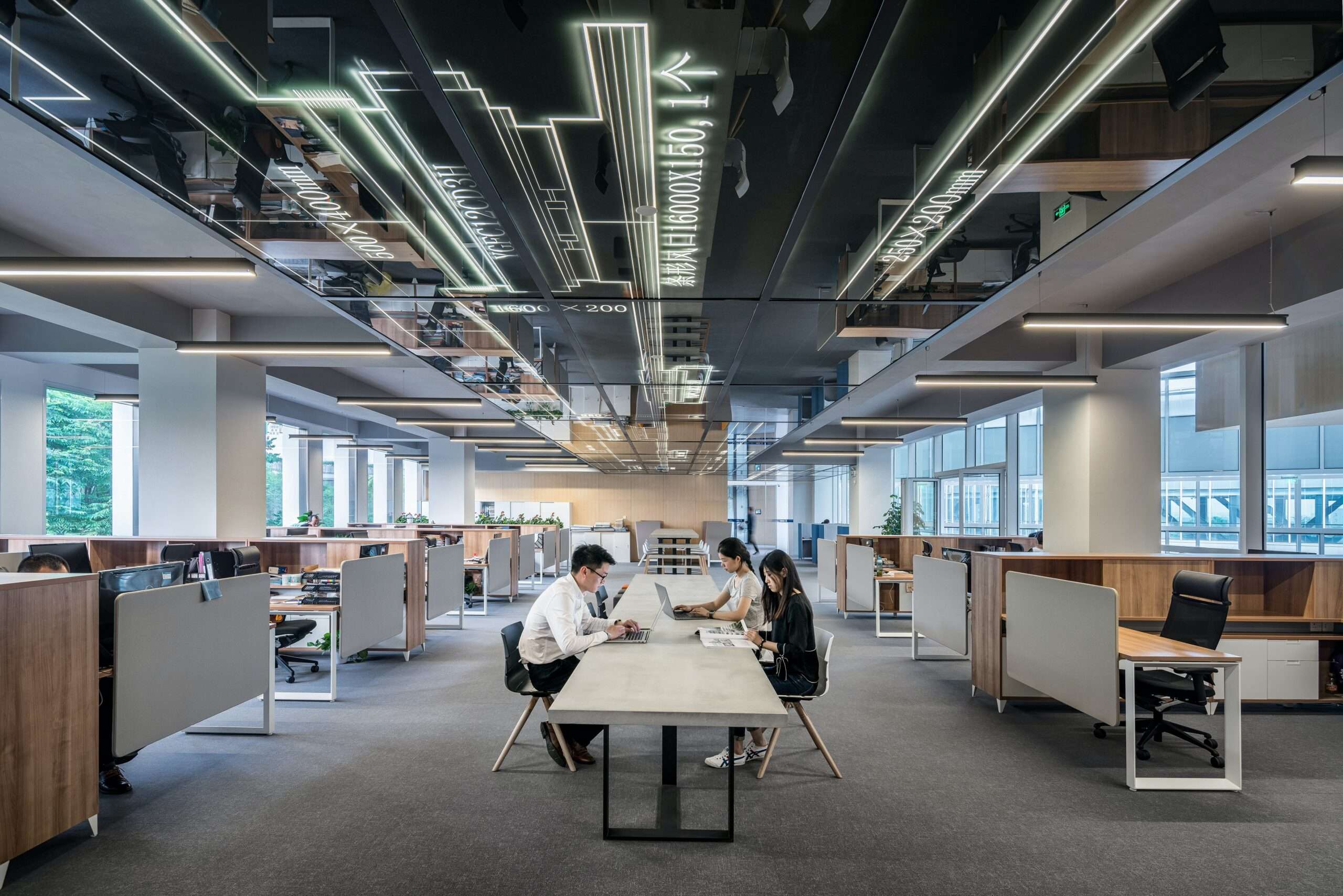
Art and Décor: Adding a Personal Touch
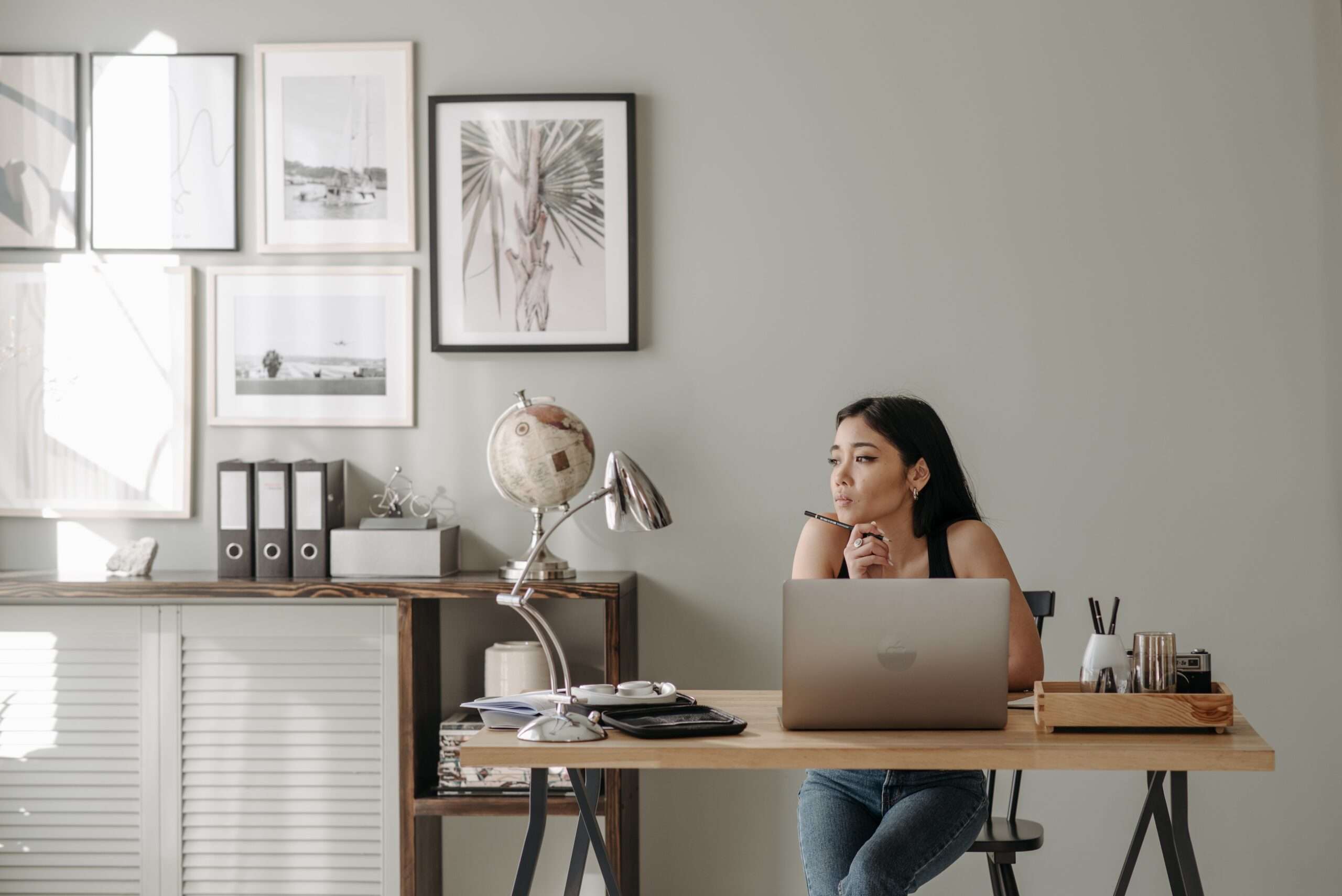
Artwork and personalized décor wield the power to breathe life and character into office spaces. Beyond mere aesthetics, they infuse a sense of identity and inspiration that resonates with both employees and visitors.
By adorning the walls with one-of-a-kind creations, offices become more than sterile environments – they evolve into dynamic canvases reflecting the diversity and creativity of the workforce. Local artwork, in particular, establishes a connection with the community, showcasing support for regional artists and encapsulating the essence of the surroundings.
Ultimately, the integration of artwork and personalized décor is an investment in an environment that transcends the mundane, where the fusion of creativity and identity fortifies the collective spirit and encourages innovation.
Budget-Friendly Design Ideas
Crafting an impactful office design need not hinge on a substantial budget. Resourcefulness shines as a key element, as inventive deployment of cost-effective materials, DIY ingenuity, and repurposed furniture can yield remarkable outcomes. By harnessing these approaches, offices can metamorphose without financial strain. Simple yet ingenious ideas like using pallets as modular seating or transforming old doors into stylish desks showcase the power of imagination. This approach not only respects financial constraints but also champions sustainability by minimizing waste. The true essence of effective office design lies in the fusion of creativity and practicality, demonstrating that innovation can flourish irrespective of budget size

Art and Décor: Adding a Personal Touch
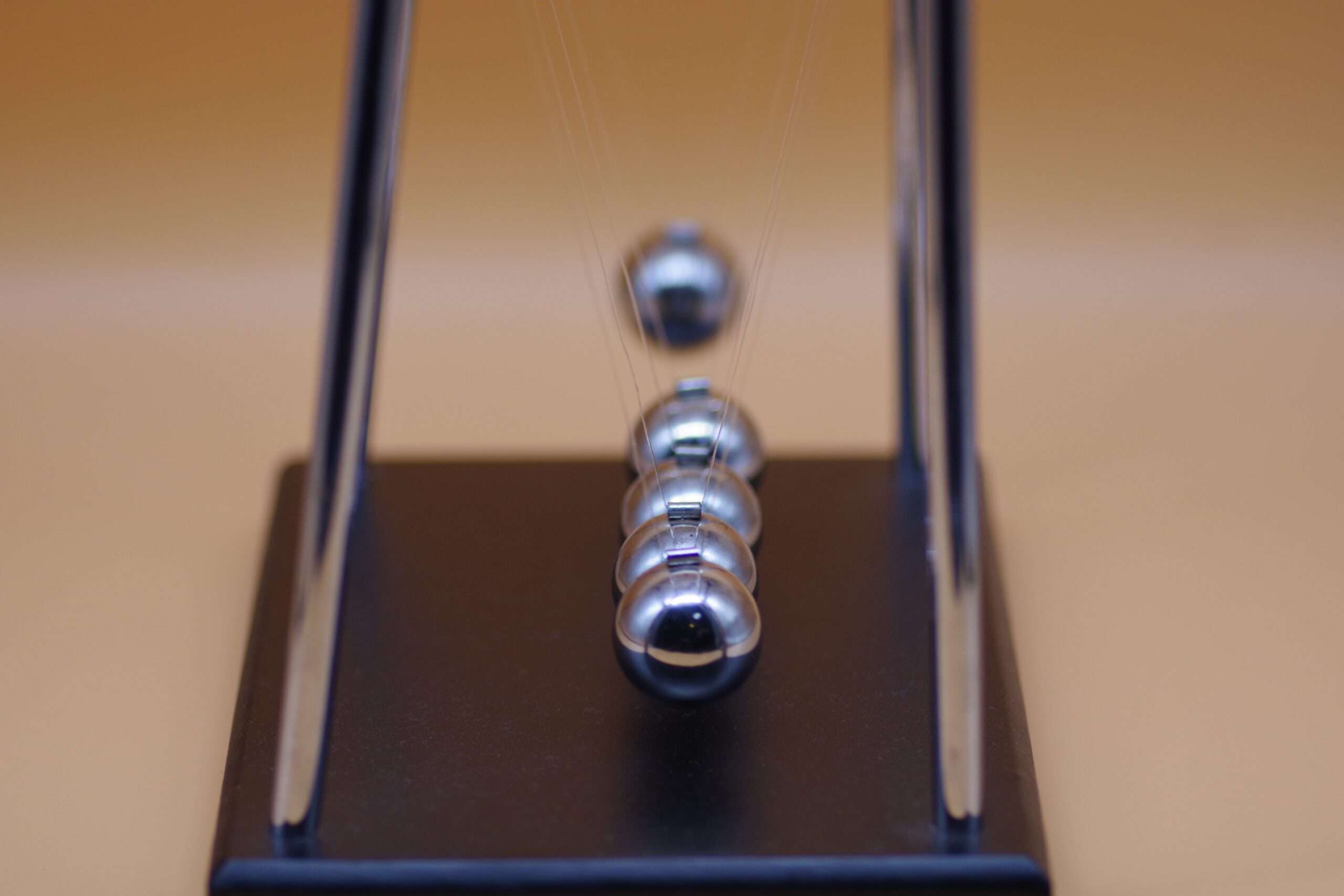
Evaluating the efficacy of office design holds paramount importance. To gauge the influence of design alterations on employee contentment and productivity, deploying surveys, feedback channels, and performance metrics is essential. These tools provide valuable insights into how the workspace resonates with the workforce. Surveys capture nuanced opinions, feedback mechanisms unearth constructive suggestions, and performance metrics unveil quantitative changes. This cyclical assessment process not only refines design to better suit employee needs but also underscores an organization’s commitment to continuous enhancement. By harmonizing qualitative and quantitative data, businesses can meticulously refine their work environment, nurturing a space where productivity and well-being seamlessly converge.
Future Trends in Office Workspace
Office design is in a perpetual state of transformation. Emerging trends paint a dynamic picture of the future workplace. Flexibility takes center stage, with adaptable work-spaces catering to diverse tasks and collaboration modes. Integration of virtual reality unveils a new dimension, offering immersive environments for remote teams and creative brainstorming. Wellness-oriented designs prioritize employee health through biophilic elements, ergonomic furniture, and mental well-being zones. As we navigate the horizon of office design, these trends stand as the vanguard of change, redefining the very essence of work environments and heralding an era where innovation, technology, and well-being converge to shape the way we work, interact, and thrive.
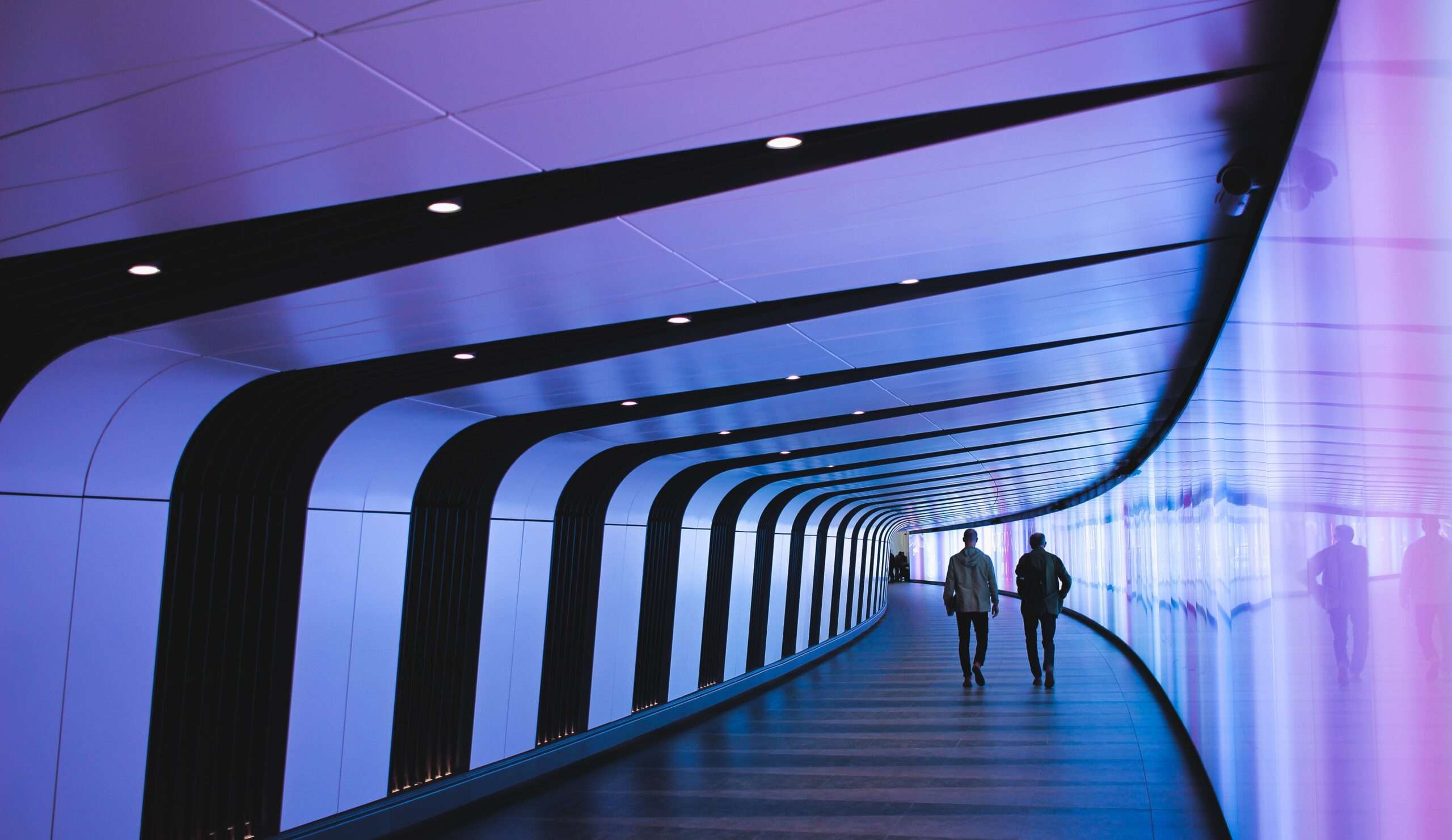
Conclusion
Office interior design has transcended its traditional role and become a strategic tool for creating engaging, efficient, and harmonious work environments. By prioritizing employee well-being, incorporating innovative design elements, and embracing sustainability, businesses can create workplaces that inspire creativity, foster collaboration, and drive success.
FAQs
How does office interior design impact employee productivity?
Office interior design directly affects employee mood, comfort, and motivation, leading to increased productivity and job satisfaction.
What are some cost-effective ways to improve office design?
Budget-friendly office design can involve re purposing furniture, using DIY solutions, and focusing on essential areas like lighting and seating.
Can office design contribute to employee well-being?
Yes, biophilic design, ergonomic furniture, and wellness-focused spaces can significantly enhance employee well-being and satisfaction.
How can technology integration improve the office experience?
Smart office technologies like automated lighting and climate control systems streamline operations and enhance employee convenience.
What are some upcoming trends in office interior design?
Future trends include flexible work-spaces, virtual reality integration, and designs that prioritize physical and mental wellness
Photos from: Unsplash.com & Pexels.com
